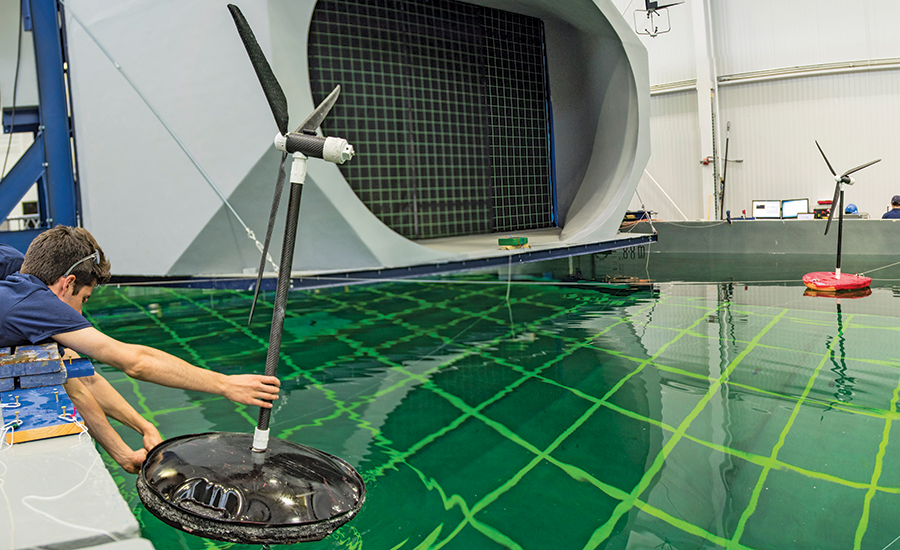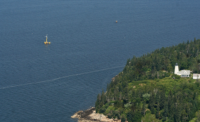More than 300 middle and high school students on May 20 flocked to the University of Maine-Orono to unveil designs for the most stable floating wind turbines and energy-efficient wind blades. The competitions, which included running tests at a unique school lab that simulates extreme ocean-storm conditions, are attracting student innovators as developers seek to build offshore wind-farm projects not far away.
Student teams in the two “challenges,” held at the university’s Advanced Structures and Composites Center, designed and built scale models, which were tested in the center’s wave test basin. Newly opened this year, it is the first in the world to feature a rotating, open-jet tunnel, simulating winds of up to 220 mph and 60-ft waves.
Teams from Falmouth and Bangor high schools won the turbine-platform and wind-blade contests, respectively, earning $20,000 center internships if they enroll at the university. Wind-blade designers, who linked with experts in composites and related wind-energy firms, had to manufacture an assembly to generate the most energy in three minutes or less and defend their designs to industry judges. “We’re confident some of the best future engineers, scientists and entrepreneurial leaders were here. Our goal is to inspire them with opportunities in our state,” said Habib Dagher, center executive director.
Nate Faessler, a past winner in high school, “came to work for us as a [college] freshman and became instrumental to our deep-sea lidar operations, which detect wind conditions using laser technology above the ocean surface,” says Josh Plourde, a center spokesman.
“I always wanted to be involved with alternative energy,” says Faessler, who just earned a mechanical engineering B.S. degree and, starting in June, will work full time at the center. The university “can’t produce enough engineers to keep up with demand in Maine,” Plourde says.
Work to connect the 30-MW Deepwater Wind offshore farm—the first U.S. offshore demonstration project of its type—to Rhode Island’s state grid could finish by year’s end, developers say. Also, Canada-based Beothuk Energy, which seeks to build a 26-turbine, 180-MW demo wind farm off the Newfoundland coast, now is negotiating with Atlantic Canada and northeastern U.S. utilities for four power purchase agreements, noted Chairman Kirby Mercer on May 11 at a Boston conference. “In the next five years, 4,000 dirty megawatts will be retired in New England states,” he said.




Post a comment to this article
Report Abusive Comment